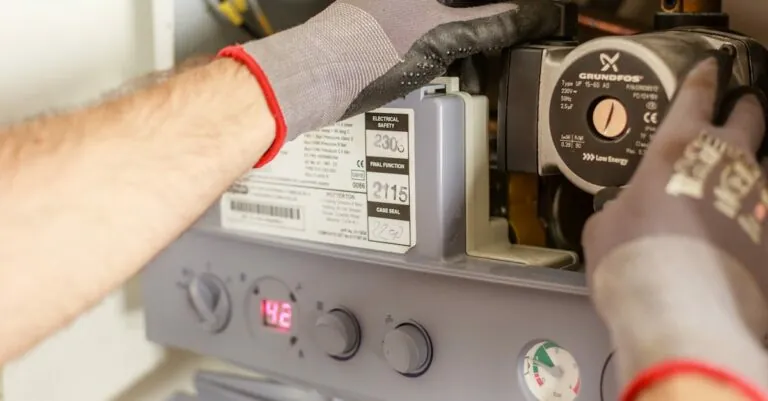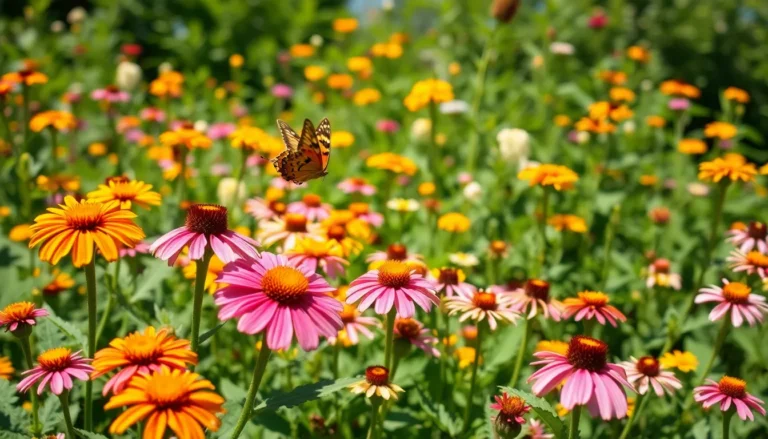Choosing the right paint color for a kitchen can feel like an Olympic sport. With so many options, it’s easy to get lost in a sea of swatches, wondering if “Eggshell White” really is the color of your dreams or just a fancy way of saying “boring.” But fear not! The right shade can transform a dull space into a culinary haven where even burnt toast feels gourmet.
Table of Contents
TogglePopular Kitchen Paint Colors
Choosing the right paint color for a kitchen can transform its overall look and feel. Here are some of the most popular color options.
Neutral Tones
Neutral tones like beige, gray, and off-white create a calm and versatile environment. These shades work well with various styles, from traditional to modern. Light grays provide a soft backdrop, while warm beige adds warmth to space. Off-white reflects light, making kitchens appear larger and brighter. Opting for neutral colors allows for easy changes in decor and accessories.
Bold Colors
Bold colors such as deep blue, vibrant red, and rich green make a striking impact. These shades can serve as focal points, adding personality and character to any kitchen. A navy blue might evoke elegance, while a bright red offers a sense of energy. Choosing bold colors encourages creativity, allowing homeowners to express their individuality. Pairing these hues with neutral elements balances their intensity and maintains cohesiveness.
Pastel Shades
Pastel shades, including soft pink, light lavender, and pale mint, bring a fresh and airy vibe. These colors create an inviting atmosphere, particularly in smaller kitchens. Soft pink adds romance, while light lavender introduces a charming touch. Pale mint delivers a cool, refreshing feel that pairs well with natural wood tones. Opting for pastel shades enhances brightness and adds an element of cheer to cooking spaces.
Choosing the Right Kitchen Paint Color

Selecting the right paint color for a kitchen involves careful consideration. Different elements in the space, like lighting and existing fixtures, play a crucial role.
Considering Lighting
Natural and artificial lighting can significantly impact how paint colors appear. North-facing kitchens typically exhibit cooler tones, while south-facing spaces receive warm light. Using warm hues can enhance brightness in darker areas. Conversely, cooler shades might create a serene atmosphere in well-lit spots. It’s advisable to test paint samples under various lighting conditions before making a final decision. Observing how colors shift throughout the day helps ensure satisfaction with the final choice.
Matching with Cabinets and Countertops
Cabinets and countertops define the kitchen’s overall style and tone. Harmonic color combinations create a cohesive look, while contrasting shades add visual interest. Light cabinets often pair well with deeper wall colors, while dark cabinetry can be complemented by lighter walls. Selecting a paint color that enhances the existing materials ensures a seamless aesthetic. Samples should be placed beside cabinets and countertops to visualize the overall effect. This approach clarifies how paint interacts with other elements in the kitchen.
Trends in Kitchen Paint Colors
Kitchen paint color trends shift annually, reflecting evolving styles and preferences. In 2023, designers emphasize bold, expressive shades alongside classic neutrals.
2023 Color Trends
Current trends focus on deep greens, rich blues, and earthy terracotta. Deep green evokes a sense of calm and connects interiors with nature. Rich blue stands out as a sophisticated choice, infusing kitchens with depth. Earthy terracotta adds warmth, often paired with natural wood accents. Additionally, soft pastels maintain popularity, offering subtle charm in airy spaces. Homeowners now favor hues that create balance and harmony, setting serene yet lively atmospheres.
Classic Color Combinations
Timeless pairings establish a cohesive kitchen aesthetic. White and gray remain a staple, enhancing spaces with elegance and versatility. Navy blue and warm beige blend seamlessly, introducing a modern twist to traditional designs. Rustic green with cream conjures an inviting feel, ideal for country-style kitchens. On the other hand, light gray with charcoal provides a sleek, contemporary appearance, elevating sophistication. Each combination influences the kitchen’s ambiance, promoting a stylish yet functional environment.
Tips for Painting Your Kitchen
Painting a kitchen involves careful preparation and effective techniques for the best results. Following strategic steps makes the process smoother and outcomes more satisfying.
Preparation Steps
Start with decluttering the kitchen. Removing furniture and small appliances creates a clear working space and protects belongings from paint splatters. Next, cleaning surfaces thoroughly is essential to ensure paint adheres well. After cleaning, patch any holes or cracks to achieve a smooth finish. Priming walls increases paint adherence and enhances color vibrancy. Testing paint samples in different lighting conditions helps visualize the final effect and ensures the right choice. Lastly, gathering all necessary tools, such as brushes, rollers, and painter’s tape, streamlines the painting process.
Painting Techniques
Use various painting techniques to achieve the desired look. Begin with cutting in the edges using a brush, allowing for precise lines along corners and cabinets. Rolling paint on larger surfaces provides an even coat. For optimal results, applying two coats ensures complete coverage and enhances durability. Technique varies by desired finish; a sponge or rag can create texture or patterns. Also, allow paint to dry fully between coats for a smooth application. Utilize painter’s tape to safeguard adjacent surfaces from unwanted paint. Each approach contributes to transforming the kitchen into a stylish and inviting space.
Choosing the right kitchen paint color can transform a space into a welcoming haven. With a variety of options from neutral tones to bold hues and soft pastels, there’s something for every style. Understanding the influence of lighting and existing materials plays a crucial role in achieving the desired look.
Current trends lean towards deep greens and rich blues, reflecting a desire for sophistication and warmth. By carefully considering combinations and painting techniques, anyone can create a cohesive and inviting kitchen. The journey of selecting the perfect shade is not just about aesthetics; it’s about crafting an environment that feels just right.





